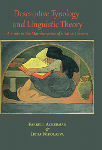

|
|
|
|

Descriptive Typology and Linguistic TheoryA Study in the Morphosyntax of Relative Clauses Descriptive grammarians and typologists often encounter unusual constructions or unfamiliar variants of otherwise familiar construction types. Many of these phenomena are puzzling from the perspective of linguistic theories: they neither predict nor, arguably, provide the tools to insightfully describe them. This book analyzes an unusual type of relative clause found in numerous related and unrelated languages of Eurasia. While providing a detailed case study of Tundra Nenets, it broadens this inquiry into a detailed typological exploration of this relative clause type. The authors argue that an understanding of this construction requires exploring the (type of) grammar system in which it occurs in order to identify the (set of) independent constructions that motivate its existence. The resulting insights into grammar organization illustrate the usefulness of a construction-theoretic syntax and morphology informed by a developmental systems perspective for the understanding of complex grammatical phenomena. is Professor of Linguistics and Director of the Human Development Program at the University of California, San Diego. is Professor of Linguistics at the School of Oriental and African Studies, University of London, and Head of the Department of Linguistics and Language and Cultures of Africa. DedicationBurkhardt (2005: 69) describes the crucial role of naturalists in the development of early animal behavior research as follows:
The consequential difference between specimen collectors and systematic observers permits the recognition that this new type of field naturalist transformed the study of animal behavior into the science of comparative psychology. This book is dedicated to Charles J. Fillmore whose nuanced insights about the nature of grammar systems has helped to transform the theoretical study of language: they have led many researchers over many years to explore construction-theoretic approaches to linguistic analysis. He is a singular naturalist of language and a keen grammar watcher. Through a long career he has reliably shaped surprising observations into the patterns of systemic relatedness that motivate language particular encodings. We can only hope that some of the directions developed in this book accord with his own intuitions and may even make him smile occasionally with some unexpected satisfaction. Contents
February 2014 ISBN (Paperback): 9781575864563
|
Distributed by the
University of Chicago Press |
|
pubs @ csli.stanford.edu
|
CSLI Publications
Stanford University Cordura Hall 210 Panama Street Stanford, CA 94305-4101 (650) 723-1839 |